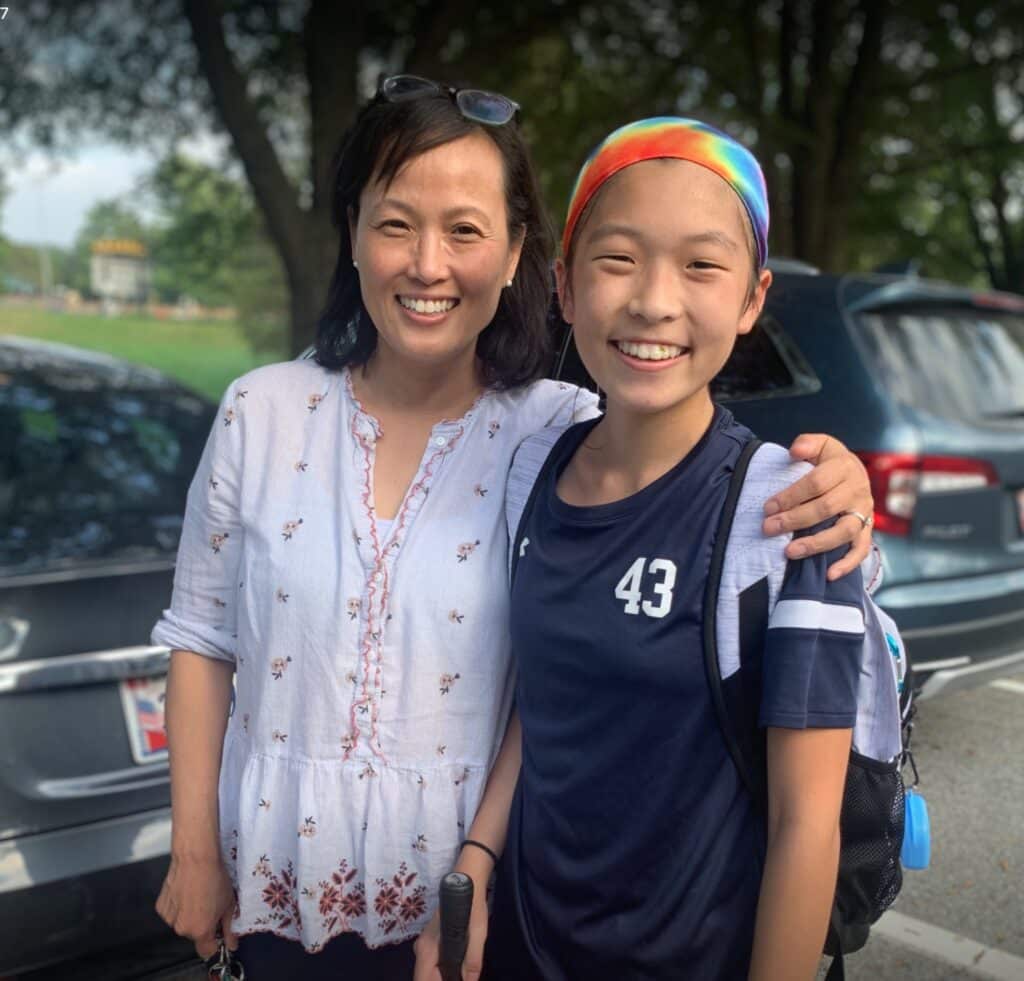
Choose Your Language:
Posted by: The Sumaira Foundation in Caregiver, NMO, Professional, Voices of NMO

I am a caregiver to my daughter, Nell, who was diagnosed with NMO at age 9. Prior to her diagnosis, she was an active, vibrant girl playing travel lacrosse, robustly healthy and energetic. Then out of nowhere, she developed nausea and dizziness, which was thought to be a nonspecific virus, but when it persisted and progressively worsened, I took her to the ER one cold night in January 2018.
A neurologist was consulted, and an MRI was ordered. Thankfully, a friend of mine was the radiologist on-call that night in the ER. I am also a radiologist. Nell went into the scanner close to midnight. As I waited for her images to appear on the computer screen, I was nervous. But nothing could have prepared me for what I was about to see.
There were multiple areas of abnormalities in her brainstem and brain. Her nausea and dizziness made so much sense now.
I was shocked, horrified. I could barely stand and had to brace my legs against the computer desk. Then my thoughts immediately went to self-blame because I didn’t take Nell to the ER sooner or get her a brain MRI sooner.
I felt lost. How could our lives be upended so suddenly?? Nell was in the ICU for about a month because she had trouble swallowing and talking and then had trouble breathing because she developed aspiration pneumonia.
When Nell was finally discharged, we were so relieved to be at home. What I didn’t realize was that this was only the beginning of a long journey, both from a health perspective as well as an emotional one.
We had so many friends in the lacrosse community and school community. Because Nell could neither play lacrosse nor attend school, we were no longer interacting in our usual social circles.
I stopped my practice of radiology to care for Nell. While I was grateful to be able to care for Nell, I don’t think I understood the importance of self-care in my role as a caregiver. Instead of self-care or self-compassion, my mental chatter was about self-blame and worry. When I finally hit a “rock bottom” moment of exhaustion, I decided to hire the physician life coach recommended to me by a friend.
She helped me see that the thoughts in my mental chatter and worry were choices I made. Once I learned that I had agency in choosing my thoughts, a new world opened up to me. It was a world where I could choose to give myself grace or continue to punish myself for circumstances beyond my control. I decided to believe that I was doing the best I could and Nell was getting better. Our family was getting better. When I committed to believing this, I could see this becoming our reality. I noticed small moments that started to tell a different narrative about us.

As she observed the shift in my countenance and tone of voice, Nell mirrored me and also felt less stressed. Her face started to regain its healthy glow as she started to eat more and become more energetic.
With this stunning realization of how my thoughts could create a different experience for me, I felt the heavy burden of worry and guilt lifted off my shoulders. I felt more hopeful and less exhausted.
After discovering the power of my thoughts and their impact on my life, I decided to become a certified life coach. I use the tools that I have learned to help me, Nell, and our family navigate life’s challenges as they arise. I also coach other moms of kids with chronic needs.